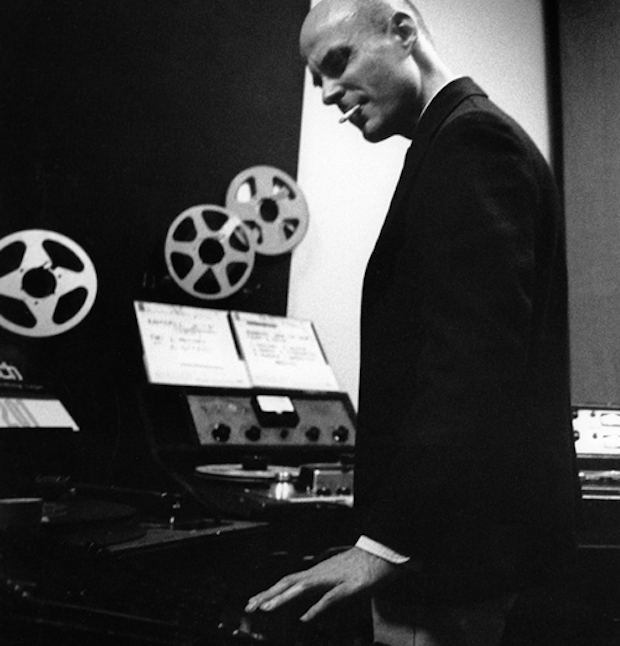
Composer Tod Dockstader (1932-2015) died yesterday at the age of 82.
Dockstader was a self-taught musician and he event went so far as to call his work ‘organized sound‘ (like Edgar Varése), to distinguish it as something different than traditional composition.
Dockstader worked as a film editor and sound engineer in Hollywood in the late 1950’s, and started creating musique concrète works at Gotham Recording Studios, in his spare time.
He released his first album, Eight Electronic Pieces in 1960. Music from the album was later used on the soundtrack to Federico Fellini’s film Satyricon in 1969. He was very active as a composer in the 1960’s, releasing multiple albums, including Quatermass, a work some consider to be his masterpiece.
His lack of traditional music training ultimately put the brakes on his music career, because he was unable to find work at electronic music studios. Instead, he took his talents to the field of education, writing, editing and creating soundtracks for films for classroom use.
In recent years, some of Dockstader’s works have been rereleased by Starkland. Interviews with Dockstader, a discography and more are available at the Unofficial Tod Dockstader Site.
Here’s what Dockstader had to say, in reflection on his 1960’s tape music:
Some composers who worked in what’s been called the “glorious junkshop” of the now-classic tape studios have looked back in awe and dismay at the amount of hard, physical work it took to make a piece.
But easier isn’t necessarily better. I enjoyed it: I found it was like the best part of painting – standing on your feet all day, moving around, working with your hands, sometimes very fast, more often very slowly, mixing, cutting, stitching it together with the sound in your ears. It had a muscular joy to it.
I think a lot of us had fun up on that singing high wire, teetering between control and chaos, trying to push the sound a little farther toward Something we hadn’t heard before, working in it… Listening.
Here are several examples of Dockstader’s work:
Water Music, Part 3, taken from the release Drone, Two Parts Of Apocalypse, Water Music by Tod Dockstader (1966)
Pond Dance, from Electronic Vol.1 by Tod Dockstader. 1979.
Myst, from Aerial #1, 2005.

He will be sorely missed.
yearly aphex twin
Not pioneer but a contributer. Musiq Concrete was coined and in production before he was born.
Dockstader would have been about 17 or 18 when Schaeffer established the term musique concrete, around 1949. So, yes, Dockstader was born.
Dockstader brought new techniques to the genre, and it would be insane to think that this territory was well explored, when it was being explored by a handful of largely non-traditional musicians, working in their spare time.
Also, never diss a guy when he just died – you’ll come off as ignorant and disrespectful.
How is correcting the title of the inaccurate article “dissing someone”? The term might have been coined when he was in his mid teens, but the process started long before. I am sure he has made a lot of contributions like any other famous name in the field, but that is far from “pioneering” the genre. Eight Electronic Pieces, was released in 1960, 12 years AFTER Schaffer.
If you want to quibble about the word “pioneer” you will miss the point. If you restrict the term as a reference only to the very first person to ever plug something in, in order to generate sound, then you are right; he was not a “pioneer”. But the fact remains, Dockstader was among the earliest composers of an entirely new genre of music no matter which term anyone prefers to use in reference to that position in history. Furthermore, he was among the earliest people to explore a new aesthetic of music. Not the earliest – among the earliest. Others were doing similar work. But that does not mean that Dockstader is not generally recognized by all informed persons as one of those who helped to introduce and develop the filed of electronic music.
So you’re off by a generation and still digging yourself into a deeper hole?
The tape loop work of Steve Reich, close to another decade later still, was quite pioneering.
I discovered him through this website. I love that last track, “Myst”.
RIP.
an article of a great composer and his death and people find ways to bicker and squabble. ” humans”